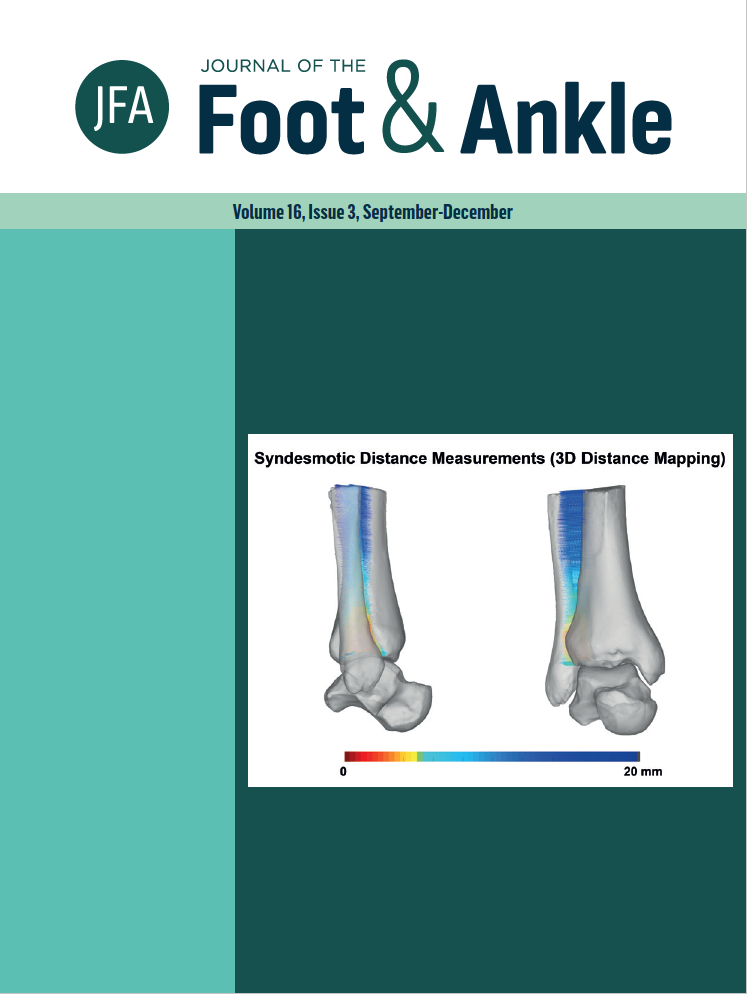Minimally invasive surgery for lesser toe deformity: a clinical audit of a proposed treatment algorithm
DOI:
https://doi.org/10.30795/jfootankle.2022.v16.1650Keywords:
Clinical audit, Foot deformities, Hammer toe syndrome, Metatarsal bones, Minimally invasive surgical proceduresAbstract
Objective: There is increasing interest in the performance of minimally invasive foot surgery (MIS); however, limited evidence and treatment algorithms are available to support its use and guide surgical decision-making. The aim of this prospective clinical audit was to report the efficacy of a treatment algorithm used to treat patients presenting with lesser toe deformities using MIS techniques. Methods: A prospective clinical audit of 38 patients who underwent 55 MIS procedures for complex and simple lesser toe deformities was conducted between April 2018 and June 2022. All patients were followed up for a minimum of 12 months post operatively. The audit was conducted following the National Research Ethics Service (NRES) guidelines on clinical audit. Results: Mean pre-operative Visual Analogue Pain (VAS) score was 3.95 with a median of 5.00. The mean post-operative VAS scores improved to 0.23 after six weeks and 0.43 after 12 weeks. A Mann-Whitney U test concluded that this improvement was statistically significant (p<0.05). Conclusion: This algorithm appears effective in treating lesser toe deformities independent of deformity classification, concomitant surgery, gender or whether the surgery was performed in a hospital or private clinical setting. Level of Evidence V; Therapeutic Study; Expert Opinion.
Downloads
Published
How to Cite
Issue
Section
License
Copyright (c) 2022 Journal of the Foot & Ankle

This work is licensed under a Creative Commons Attribution-NonCommercial 4.0 International License.







